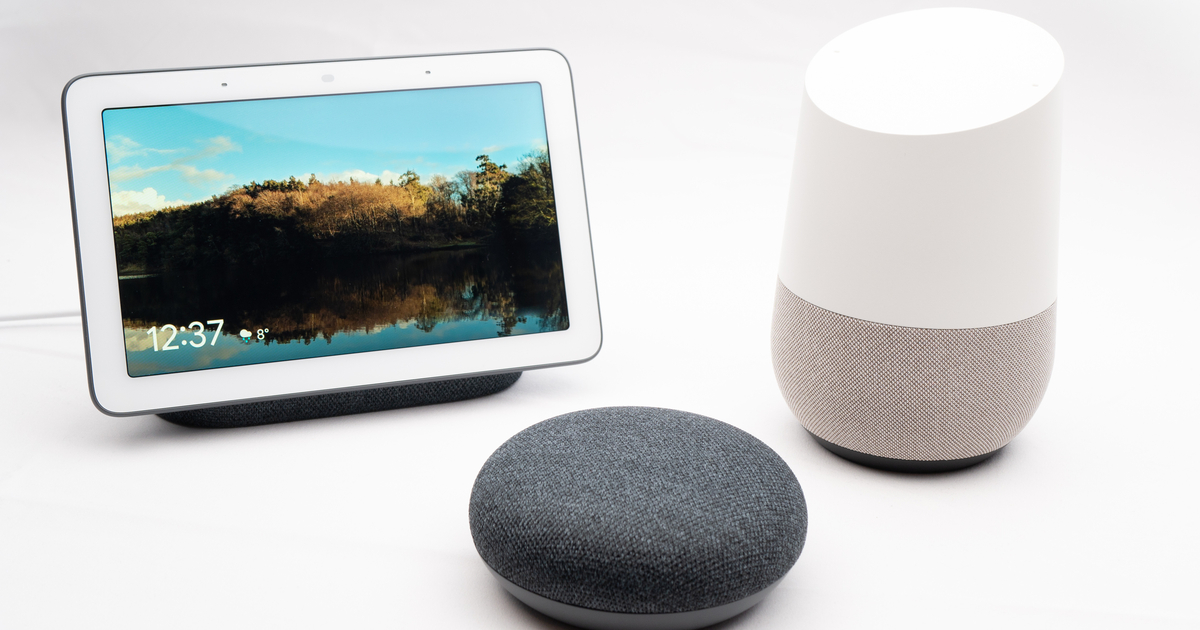The Rise of Google Nest
Nest Labs was founded in 2010 by Tony Fadell and Matt Rogers, both former Apple engineers who wanted to reinvent everyday home technology. Their first product, the Nest Learning Thermostat, was revolutionary in the U.S. because it combined sleek design with smart learning features that adapted to user behavior. In 2014, Google acquired Nest for $3.2 billion, accelerating the brand’s growth. Over time, the product line expanded from thermostats to include security cameras, smart displays, WiFi systems, and speakers, creating a complete ecosystem that simplifies and modernizes daily living for millions of American households.
Google Nest Product Ecosystem
Google Nest Hub & Google Hub
The Google Nest Hub is a smart display that integrates Google Assistant with a touchscreen, offering both voice and visual interaction. In the U.S., it is especially popular as a kitchen companion, displaying recipes step-by-step and streaming cooking videos from YouTube. Families also use it as a photo frame powered by Google Photos, showcasing memories in real time. It doubles as a media hub for streaming Netflix, Spotify, or YouTube. Competitors like Amazon Echo Show and Facebook Portal target similar uses, but many U.S. households prefer Google Hub due to its seamless integration with the larger Google ecosystem.
Google Nest Thermostat
The Google Nest Thermostat is a smart, energy-efficient device designed to help U.S. households cut utility costs while maintaining comfort. According to the U.S. Department of Energy, it can save up to 15% on cooling and 10–12% on heating bills, which makes it appealing in states with extreme summers or winters. The thermostat “learns” user habits and adjusts temperatures automatically, and homeowners can manage it through the Google Home app. Competing products include Ecobee SmartThermostat and Honeywell Home, but Nest’s sleek design and integration with Google Assistant make it one of the most recognizable smart thermostats in America.
Nest Cam & Google Nest Cam
The Nest Cam line includes both indoor and outdoor cameras with AI-driven motion detection. These cameras are widely used in U.S. homes for monitoring pets, children, or property security. Features such as live video streaming, cloud storage, and smart alerts make them highly reliable. With a Nest Aware subscription, users gain access to extended video history and advanced detection features. Competitors like Ring, Arlo, and Eufy also dominate the security camera market, but many Americans choose Nest Cam for its integration with Google Assistant and the Google Home app, which simplifies setup and centralized smart home control.
Google Nest Mini & Google Home Mini
The Google Nest Mini, formerly known as the Google Home Mini, is one of the most affordable smart speakers in the U.S. Its compact design fits easily in small spaces, yet it delivers surprisingly strong sound. Many American families place them in bedrooms, kitchens, or living rooms to control lights, set reminders, and play music through Spotify or YouTube Music. It competes with Amazon Echo Dot and Apple HomePod Mini, but Nest Mini is especially popular among cost-conscious buyers. Its affordability makes it an entry point into the Google smart home ecosystem, often leading to further device adoption.
Google Nest Audio
The Google Nest Audio is a larger, high-quality smart speaker designed for music lovers who want rich, room-filling sound. U.S. households often use it as a primary speaker for streaming services like Spotify, YouTube Music, or Pandora, and it supports multi-room audio when paired with other Nest devices. Compared to competitors like Sonos One and Amazon Echo Studio, Nest Audio is more affordable while still delivering excellent sound quality. Many users also appreciate its built-in Google Assistant, which combines entertainment with productivity, allowing people to enjoy music while also controlling lights, thermostats, and other connected smart devices.
Google Nest WiFi
Google Nest WiFi is a mesh WiFi system designed to provide seamless internet coverage across large American homes, which often have multiple floors and thick walls that block signals. Each router and point ensures strong coverage, and setup is simple through the Google Home app. A standout feature for families is parental controls, allowing parents to pause internet access for kids during dinner or bedtime. Its main competitors are Amazon’s Eero and Netgear’s Orbi systems, but Nest WiFi stands out for its integration with Google Assistant, enabling users to ask voice commands about internet speed or device connectivity.
Benefits of Google Nest
The Google Nest ecosystem provides multiple benefits to U.S. households. Convenience is a major draw: all devices are voice-controlled or managed through the Google Home app. Energy efficiency from the Nest Thermostat helps reduce bills, appealing to cost-conscious and eco-friendly consumers. Security is enhanced with Nest Cams, which offer peace of mind for families. For entertainment, Nest Hub and Nest Audio bring music, video, and family photos into everyday routines. Finally, integration ties everything together, allowing all devices—whether speakers, cameras, thermostats, or WiFi—to work seamlessly under the Google Home umbrella.
Challenges for Google Nest
Despite its popularity, Google Nest faces several challenges in the U.S. market. Privacy concerns arise because devices like Nest Hub and Nest Cam include always-on microphones and cloud-based video storage, which may worry users. Compatibility issues occur when integrating with non-Google ecosystems, particularly Apple devices. Many features, especially advanced camera options, require a Nest Aware subscription, adding ongoing costs. Additionally, competition from Amazon Alexa and other smart home brands continues to pressure Nest’s market share and growth.

